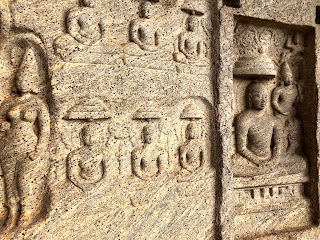The kings of Venadu, a small kingdom at the southernmost part of present day Kerala, expanded their territories over time and by the early 18th century had established the powerful Kingdom of Travancore which at its height controlled much of what is today the state of Kerala and the district of Kanyakumari in Tamil Nadu as well as other territories. It eventually became a princely state of British India and merged with the Indian Union after independence in 1949.
In the early 1600s the kings of Venadu built a palace at Padmnabhapuram here on the Tamil Nadu side of the Kerala-Tamil Nadu border. Expanded upon by the Travancore kings, it served as their royal palace until 1795, when the capital was moved to Thiruvananthapuram.
Located about 13 km or 20 minutes from Nagercoil in the northwest direction, it is a remarkable example of Keralan architecture of the period. Large parts of it are entirely built of Jack-tree wood. Amazing wood craft.
Do not miss the museum of antiquities that is housed in the building to the right of the entrance that has very interesting artifacts found in the region and is decently curated. Many fine examples of granite carvings, stone inscriptions and copper plates.
Visited August 2019


























































